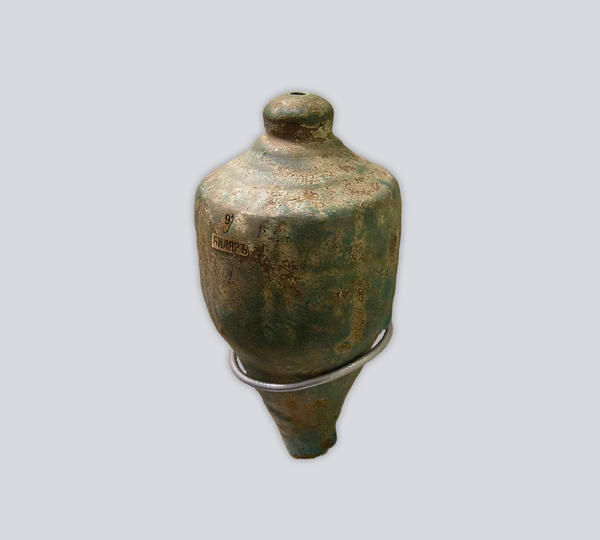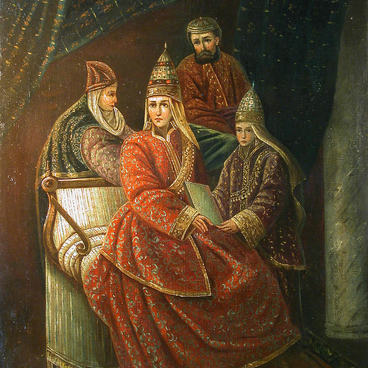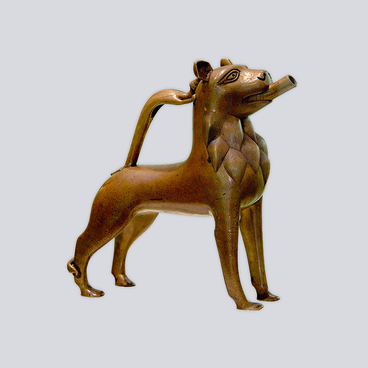Although earthenware fabrication was quite a difficult and labour-consuming activity for potters of the 10th-15th centuries, explorers have discovered about 2600 ceramic containers of all sorts in Volga Bulgaria: round, drop-shaped, cylindrical, narrow or wide necked, polished or ornamented.
Spherical cone
Время создания
10th-15th centuries
Размер
16,25x8,57 cm
Техника
Ceramics, glaze. Throwing and burning
Выставка
4
Открыть в приложении#1
Spherical cone
#2
#3
The spherical cone vessel displayed here was found by archaeologists in the 19th century during excavations of the city of Bilyar, one of the Volga Bulgaria capital cities in the Middle Ages. It is made of clay, glazed, and patterned. It is 16 cm large, one of the largest size vessels discovered on the Bilyar city site; normally, the size of such artifacts does not exceed 10-15 centimetres.
#4
Spherical cones were quite durable: their red or grey clay walls could be up to three centimetres thick. The elongated bottom, broad body, and thin neck prevented spills even when they were open and rolling. So, they were convenient for storage and delivery of liquids.
#5
The actual purpose of these ancient spill-proof cups is still a mystery to historians. The contents of such spherical cones, which explorers managed to trace and identify, could easily be used in perfume making, medicine, alchemy, or religious rites. At first, experts thought these vessels were designed to be home lighting fixtures or containers for ignition compounds, but nobody proved that theory. Nowadays, scholars tend to think that spherical cones were multifunctional and used in various spheres of life. In households, they would be used to keep physics; in long-distance travels, they served as water pots.
#6
Experts occasionally found inscriptions on such vessels, and have managed to read them. Usually, spherical cones had names of people on them or wishes, like long life wishes.
Items like this were not only popular in Volga Bulgaria. Similar findings have taken place in other Volga regions, Trans-Caucasia, Central Asia, and the Middle East, which testifies to trade and cultural links between these areas.
#7
National Museum of the Republic of Tatarstan
читать дальшескрыть
00:00
00:00
1x
Spherical cone
Время создания
10th-15th centuries
Размер
16,25x8,57 cm
Техника
Ceramics, glaze. Throwing and burning
Выставка
4
Открыть в приложении
Поделиться



